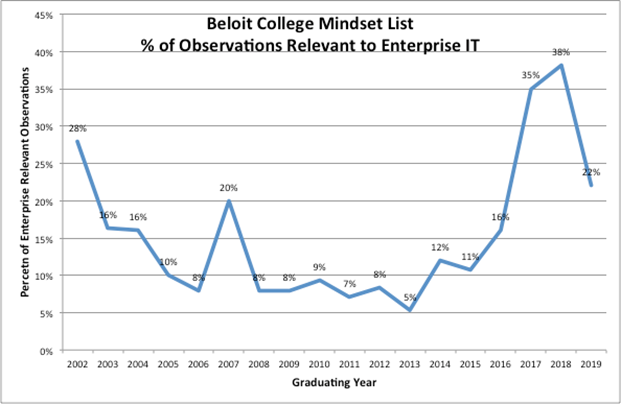The Shadow Sales IT Infrastructure: What’s Fueling It?
- There are many vendors hoping to penetrate the enterprise with their solutions through free and “freemium” downloadable apps
- These offerings are often attractive for one particular reason
- Expectations have changed, and users have lost patience with solutions that meet “the needs of the business” – but not their needs
The term “shadow sales infrastructure” once defined a group of IT-savvy sales resources who secretly designed and deployed skunkworks solutions to help other sales professionals improve their productivity. IT centralization killed those efforts within the corporate firewall, so they moved outside it. Today there are thousands of vendors hoping to penetrate the enterprise with their solutions through free and “freemium” downloadable apps that sales operations and IT departments are unaware of. Why are these offerings so attractive? The answer is simple: Expectations have changed and users have lost patience with solutions that meet “the needs of the business” – but not their needs.
 Every year, Beloit College publishes The Mindset List to provide professors some perspective on the world view of the new freshman class. It’s always amusing to read, especially if you like feeling “dated” in comparison to the last few years of Millennials who are now coming of age.
Every year, Beloit College publishes The Mindset List to provide professors some perspective on the world view of the new freshman class. It’s always amusing to read, especially if you like feeling “dated” in comparison to the last few years of Millennials who are now coming of age.
With my background in sales operations, it wasn’t enough for me to just read the list. I had to go back and study it from its 1998 inception (class of 2002), convert my observations into analyzable data, then look for trends that would affect sales in the coming years.
Here’s what I found:
- The number of observations on the list varies from 43 to 75 in any given year. I normalized the data using percentages.
- Observations may be logically grouped into categories such as social, medical, geopolitical, technological, and probably a few others.
- The technological observations have the most relevance to sales, specifically sales technology, so I focused on them.
- The “Beloit College Mindset List” chart shows the percentage of each year’s list that is devoted to technological observations. It began with a spike in 1998 (class of 2002). In 2002 (class of 2007), the category spiked again and subsequently reached its zenith in 2013 (class of 2017) and 2014 (class of 2018).
Here are the excerpts I found most relevant from each of the spike years:
| Mindset List Year |
Observation |
| 2002 | “They have always had cable.” |
| 2007 | “They would never leave a calling card on someone’s desk.” |
| 2017 | “With GPS, they have never needed directions to get someplace, just an address.” |
| 2018 | “… always been able to secure immediate approvals and endorsements for their ideas through “likes” on their Facebook page, and have rarely heard of a “bipartisan agreement”…How will the absence of instant online approval impact their performance in the classroom and workplace?” |
We take for granted now that everyone has cable (high-speed Internet), but it represented a generational shift in 1998 (class of 2002). In 2002 (class of 2006), digital communication took over once and for all, as evidenced by the fact that business cards (calling cards) died. The 2012 observations (class of 2016) demonstrate a supreme lack of patience and demand for instant gratification (“Don’t give me directions, just give me an address”). Finally, in 2014 (class of 2018), social media established dominance as the primary means of communication, and while people like to be “liked,” a lack of desire to seek “bipartisan” solutions means that people and things can be “unliked” as quickly as they are liked.
Take the most recent zenith in Beloit College mindset trends devoted to technology, couple it with the fact that in July 2015, digital media (fueled by exponential growth in social media adoption) overtook traditional media as the primary source of news (according to an article in the Washington Examiner), and it’s apparent that 2015 is an inflection point. Social media is the final nail in traditional media’s coffin. Why? Because people, especially Millenials, no longer view themselves as platform consumers; they view themselves as platform participants. They want to participate in everything, including sales technology development and its ongoing performance assessment. When these more demanding “platform participants” use a sales organization’s IT infrastructure and it doesn’t perform to their expectations, and if they feel their feedback isn’t heard and acted upon, they simply hit the “unlike” button on your sales organization and move on to one in which they feel they can participate. Either that, or they’ll download their own solutions – and you’ll never know about it.
All of these trends are fueling the democratization of sales IT. To learn how this and other trends will affect sales in the near future, join me and my colleagues at the SiriusDecisions 2015 Technology Exchange: Leveraging Technologies to Outperform the Competition, November 19-20, 2015, at the Grand Hyatt in San Francisco.
The annual Beloit College Mindset list may be found here.
Editor’s Note: We hope you’ll join us at the next SiriusDecisions Technology Exchange. Learn more here.